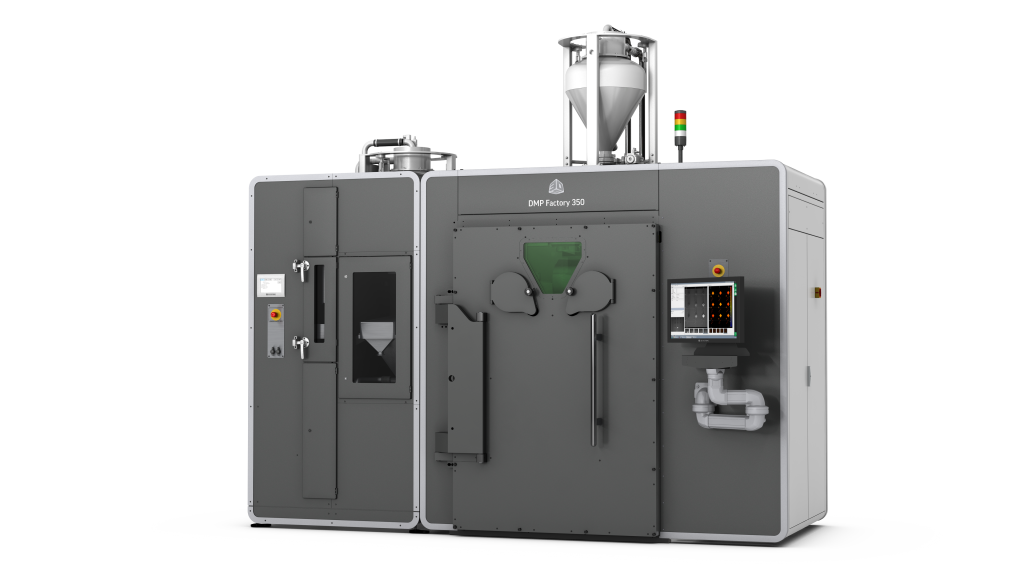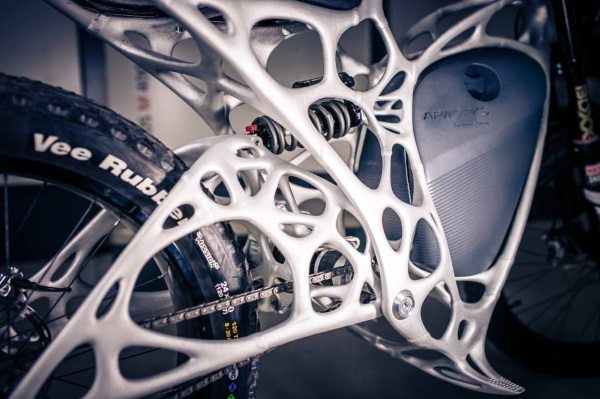U.S. 3D printer manufacturer 3D Systems has added two new alloys to its material portfolio that are specifically designed to yield high-strength, corrosion-resistant parts when used with its proprietary Direct Metal Printing platform.
With its ‘Certified Scalmalloy,’ the firm has qualified a durable aluminum that ‘bridges the gap’ between traditionally-cast alloys like AlSi10Mg and Ti Gr23, and features an excellent strength-to-weight ratio. The firm’s ‘Certified M789,’ on the other hand, is a cobalt-free alloy with a high level of hardness and wide processing window, especially when printed on the DMP Flex, Factory 350 and ProX DMP 320.
Designed alongside APWORKS and BÖHLER Edelstahl, and certified specifically for use with 3D Systems’ machines, the metals could now open new automotive, aerospace, moldmaking and energy sector applications, to their respective users.
“Having M789 as part of our metal 3D printing solution delivers greater accuracy to our automotive customers,” explains Kevin Baughey, Leader of 3D Systems’ Transportation & Motorsports Segment. “This enables them to use the technology for applications that require higher fidelity and thinner walls, like die inserts with conformal cooling and tire tread molds.”
“Our customers in the automotive industry are increasingly relying on additive manufacturing to advance and accelerate their innovation.”

Scalmalloy: primed for take-off
Designed specifically for 3D printing weight-efficient, load-bearing components, 3D Systems’ Scalmalloy possesses a tensile strength of 520MPa and yield strength of 480MPa. As a result, during internal testing, the material proved itself to be much stronger than AlSi10Mg, and particularly adept at producing high-strength, corrosion-resistant parts.
Working with APWORKS, 3D Systems has also developed an ideal parameter set for processing the material on its Factory 350 Flex 350 systems, which can be applied using its 3DXpert software. According to the firm, when used with these parameters, the alloy enables the production of robust structural motorsport components, semiconductor parts and aerospace components like filters and waveguides.
“Scalmalloy has a very attractive strength-to-weight ratio and is more amenable to 3D printing than many conventional high-strength aluminum alloys,” said Dr. Michael Shepard, VP of 3D Systems’ Aerospace & Defense Segment. “These performance attributes make it ideal for aerospace applications, and we are excited to see how our customers will continue to push the envelope with their innovation.”
“Adding the capability to additively manufacture parts from Scalmalloy to our portfolio is an important step forward; especially for our aerospace customers.”

3D Systems’ ‘Certified M789’
With its new ‘Certified M789’ alloy (also known as BÖHLER M789 AMPO), 3D Systems has qualified a material that’s optimized for creating ultra-high-strength molds and tooling. Not only is the metal free from environmentally-damaging cobalt, but it can be further toughened, allowing it to reach a Rockwell Hardness Rating of 52 HRC.
Much like its Scalmalloy R&D with APWORKS, 3D Systems has also worked with GF Machining Solutions to certify M789 for achieving highly-repeatable part quality and property results. In doing so, the firm has developed an extremely corrosion-resistant steel that’s ideal for producing tooling with long-term, repetitive applications, as well as components requiring stability at high temperatures.
Due to these qualities, the material can therefore be used for creating mold inserts with conformal cooling, while its durability lends it potential drill and cutting tool applications in the energy sector. Similarly to 3D Systems’ Scalmalloy, M789 also holds significant automotive promise, and its reliability after continued use, means that it could be ideal for 3D printing tire molds and drivetrain or axle parts.
For those interested in finding out more about 3D Systems’ materials, both Scalmalloy and M789 are set to be exhibited at RAPID+TCT from September 13-15 2021. At its booth (E7601), the firm is offering to “explore the advantages of these materials,” and help clients achieve the optimal setup for processing them via its Application Innovation Group.

Scalmalloy’s automotive potential
3D Systems’ Scalmalloy launch comes at a time when the metal is increasingly finding automotive 3D printing applications, and it has now even been approved for use within Formula 1. Wasting no time in taking advantage of this, the Alfa Romeo Racing team has 3D printed 304 parts for its 2021 car, 36% of which have been manufactured from Scalmalloy.
Just last month, the UK’s Digital Manufacturing Centre (DMC) also became an approved supplier of Scalmalloy 3D printed parts. Working alongside APWORKS as well, the DMC is said to be producing parts of such a high standard, that they’ve lifted the organization into the top 1% of Scalmalloy part suppliers worldwide.
Elsewhere in the automotive industry, 3D printing is being used to produce everything from Bugatti brake calipers to Fiat Chrysler suspension parts. With Scalmalloy now being qualified on 3D Systems’ DMP machines, it therefore stands to reason that the ultra-durable metal will further accelerate this trend, and find new applications in the near future.
To stay up to date with the latest 3D printing news, don’t forget to subscribe to the 3D Printing Industry newsletter or follow us on Twitter or liking our page on Facebook.
For a deeper dive into additive manufacturing, you can now subscribe to our Youtube channel, featuring discussion, debriefs, and shots of 3D printing in-action.
Are you looking for a job in the additive manufacturing industry? Visit 3D Printing Jobs for a selection of roles in the industry.
Featured image shows a part made from Scalmalloy. Photo via APWORKS.


